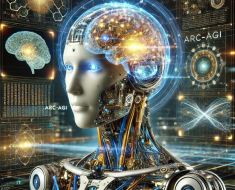
Discover the top Python libraries for AI and machine learning
In the rapidly evolving landscape of machine learning (ML) and artificial intelligence (AI), Python has emerged as a powerhouse, reigning supreme as one of the most favored programming languages. Its popularity is not just a result of its ease of use and English-like commands. Still, it is also significantly boosted by a vast collection of open-source libraries that make complex tasks in ML and AI more accessible to developers of all experience levels. Here are the top Python libraries for AI and Machine Learning
1. NumPy: Enhancing Mathematical Operations
NumPy stands tall as the most acclaimed Python library for machine learning and AI. As an open-source numerical library, it facilitates diverse mathematical operations on matrices. Its efficiency is underscored by the ability to perform operations on NumPy arrays, which require less storage space than conventional Python lists, making them faster and more convenient to use.
2. SciPy: Scientific and Technical Computing
Built on the foundation of NumPy, SciPy is a free and open-source library tailored for large datasets, excelling in scientific and technical computing. It inherits NumPy’s functions but transforms them into user-friendly scientific tools. SciPy is a pivotal player in data visualization and manipulation, offering essential processing features for high-level, non-scientific mathematical functions.
3. Theano: Empowering Machine Learning
Theano takes center stage as a numerical computation library crafted explicitly for machine learning. Its prowess lies in optimizing, defining, and evaluating mathematical expressions and matrix calculations. The library facilitates the utilization of dimensional arrays to construct deep learning models efficiently. Theano’s specialization in data-intensive calculations and its integration with NumPy contribute to its status as a go-to library for machine learning and deep learning developers.
4. Pandas: Streamlining Data Analysis
Pandas emerge as a powerhouse for data analysis in machine learning projects. Serving as a data analysis library, Pandas simplifies the manipulation of structured multidimensional data and time series concepts. With features like indexing, data alignment, merging datasets, and comprehensive data manipulation and analysis capabilities, Pandas provides a fast and efficient solution for managing and exploring data.
5. TensorFlow: Versatile Deep Learning Framework
TensorFlow, a free and open-source library, specializes in differentiable programming and is widely used for constructing deep learning (DL) and ML models, including neural networks. Its flexible architecture and framework enable it to run on various computational platforms, with optimal performance achieved on tensor processing units (TPUs).
6. Keras: Modular Neural Networks
Keras, an open-source library, targets the development and evaluation of neural networks within machine learning and deep learning models. Operating on top of Theano and TensorFlow, Keras stands out for its modularity, extensibility, and flexibility. Its user-friendly design, capable of training neural networks with minimal code, makes it an excellent choice for beginners.
7. PyTorch: Dynamic Data Science
PyTorch, another open-source machine learning library, is based on Torch, a C programming language framework. Renowned for its speed of execution, PyTorch is particularly valuable for ML and DL applications, such as natural language processing (NLP) and computer vision.
8. Scikit-Learn: End-to-End Machine Learning
Initially a third-party extension to SciPy, Scikit-Learn has evolved into a standalone Python library on GitHub. Widely adopted by major companies like Spotify, Scikit-Learn excels in classical machine learning algorithms. Its seamless interoperability with other SciPy stack tools.
9. Matplotlib: Visualizing Data Insights
Matplotlib, a fusion of NumPy and SciPy, serves as a comprehensive, accessible, and open-source library for creating static, animated, and interactive visualizations in Python. Designed to replace proprietary MATLAB statistical language, Matplotlib aids in understanding data before diving into data processing and ML model training.
10. Plotly: Immersive Data Visualization
Closing our exploration of Python libraries is Plotly, a free and open-source data visualization library. Renowned for its high-quality, immersive, and publication-ready charts, Plotly offers a rich repertoire of charts, including boxplots, heatmaps, and bubble charts. Built on top of the D3.js, HTML, and CSS visualization toolkit and written in Python, Plotly facilitates the creation of interactive graphs.







